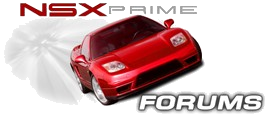Thanks for the mention, CB72.
Received the notification from the server but with lots of addons and ad blocker on my Firefox setup, not easy browsing through this site…..
Using chrome temporarily but lots of Ads and keeps me logging out everytime when I just preview my reply.....
Anyway, hope I can post this eventually.….
If you had turbo setup, most likely you have disabled the TCS.
I presume your NSX is non-DBW so the TCS is done through the TCS controller and not the ECU.
When you turn the IGSW into P2 ON position, does the [ TCS ] light at the gauge cluster stay On?
If it stays Off all the time, most likely, you have disabled it.
Check the multiple connectors at the TCS controller behind the left side seat.
Like on my NSX, for the non-DBW model, the easiest way to disable TCS is to unplug all connectors from the TCS controller.
This will result in CEL
#36 all the time but it won't trigger the CEL on the dash because the ECU must see 2 consecutive signal failures within the same drive cycle and since the TCS controller is disconnected, it can be only detected once per cycle.
As you already mentioned, check the 18pin white connector on the ABS upgrade loom if you are going to enable TCS.
You don't even need to connect it if TCS was disabled but if going back to TCS, you must connect it.
Personally, I hate TCS on non-DBW models….
Kaz









